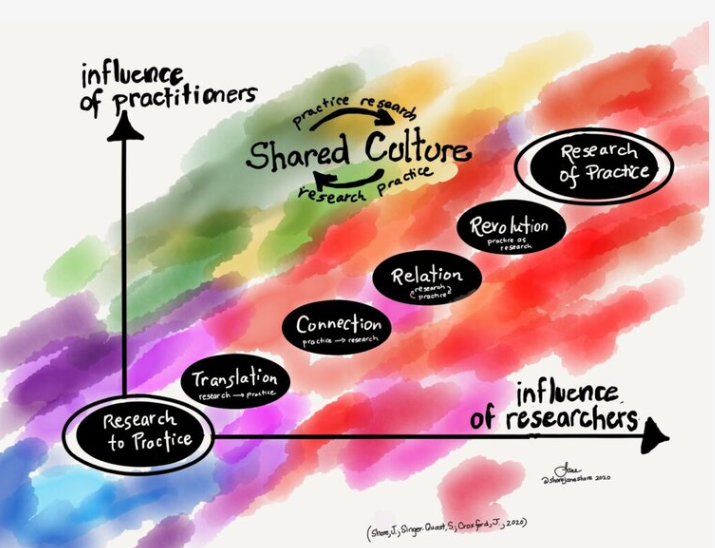Interdisciplinary Studies at the Doctoral Level
This post from the archives is an interview with Mentor-in-Residence Dr. Rick Szostak. He is the co-author of two new book editions, Introduction to Interdisciplinary Studies (2019) and Interdisciplinary Research: Process and Theory (2020). He also co-authored the 2011 Case Studies in Interdisciplinary Research. I asked Dr. Szostak to discuss ways interdisciplinary thinking help us study and understand problems that cross disciplinary boundaries. In this set of questions I wanted to gain some insights on implications for doctoral programs and research faculty.
JS. The Carnegie Initiative on the Doctorate aimed to rethink doctoral education for the 21c. One of the books that came out of their research was titled, Envisioning the future of doctoral education: Preparing stewards of the discipline (2006). While they praised cross-fertilization, they focused on the role of academics and scholars as responsible for maintaining the integrity of “the discipline.”
What do you see for the future of doctoral education, from an interdisciplinary stance?
How can interdisciplinary scholars be cultivated when doctoral programs largely exist within discipline-specific departments?
RS. There is a growing recognition that we need to train some scholars in interdisciplinary research. These can then play an invaluable role in interdisciplinary research teams, linking scholars from diverse disciplines. The National Science Foundation in the United States established the Integrative Graduate Education and Research Traineeship (IGERT) to this end in 1998. I have met several IGERT students over the years and they found their cross-disciplinary experience very stimulating. Yet even IGERT-funded programs often merely expose students to different disciplines, and leave it up to students to perform the critical task of integration.
There is a better way. We can expose graduate students to the common challenges faced in interdisciplinary research, and the strategies that have been found useful in addressing these. My (with Allen Repko) Interdisciplinary Research: Process and Theory is used toward this end in several graduate programs. Among many other resources out there, supervisors and students may find Catherine Lyall's Interdisciplinary Briefing Notes a great place to get started: https://www.wiki.ed.ac.uk/display/ISSTIInterdisciplinary/Interdisciplinary+Briefing+Notes I am always happy to give advice.
There has long been a chicken-and-egg problem with interdisciplinary graduate education: Where will graduates of such programs get jobs? This problem has eased in recent decades with the creation of lots of undergraduate interdisciplinary teaching programs. Yet a recent survey of interdisciplinary PhDs in the United Kingdom by Catherine Lyall found that many have had challenging careers because of their interdisciplinary training. It may still be strategically useful for interdisciplinary students to be able to sell themselves to disciplinary departments. Organizations such as NSF that see the need for interdisciplinary education may need to devote more resources to interdisciplinary PostDocs to help students launch their careers.
There is scope also to provide disciplinary PhD students with some interdisciplinary exposure. They can be gathered in seminars where they can discuss their research with students from other disciplines. They will often gain important insights from such interactions. These seminars can also expose them explicitly to strategies for performing interdisciplinary research.
Golde, C. M., & Walker, G. E. (Eds.). (2006). Envisioning the future of doctoral education: Preparing stewards of the discipline. San Francisco: Jossey Bass.
JS. In the 4th edition of Interdisciplinary Research, you discuss an “integrated model.”
- Can you briefly define this model and why it is important?
- Can you give an example of a study (your own or others’) that used this model?
RS. Our integrative model of interdisciplinary research describes ten iterative steps, and outlines strategies for performing each step. I stress the word "iterative" for it is common to revisit early steps -- identifying a research question, reading in relevant disciplines -- while performing later steps. The steps and strategies are best appreciated while actually performing interdisciplinary research. I have taught courses using these steps, and students have a number of "aha" moments when they recognize that a particular strategy allows them to solve a challenge they were facing in their research.
The most challenging step can involve integrating across insights from different disciplines, especially when these disagree. The trick is to identify the source of apparent disagreement. Sometimes scholars appear to disagree because they define key terminology differently; a careful exercise in "redefinition" is then the answer. Sometimes scholars disagree because they each naturally stress the variables that their disciplines study. The answer here may involve extending a theory so that it incorporates variables from other disciplines. If scholars disagree because they study different aspects of a complex problem, a good technique is to (visually or mathematically) organize their different insights into a larger model of the broader research question. Sometimes, scholars start from different assumptions or premises, as when economists stress rational decision-making and sociologists non-rational decision-making (this particular disciplinary difference has weakened in recent decades, of course). The answer here may involve appreciating that there is a continuum between perfect rationality and complete non-rationality: decision-makers may lie at many places along that continuum and researchers studying them may then combine the economist and sociologist insights accordingly.
We have tried ourselves to integrate insights from a wide range of disciplines. One topic we have addressed at greater length in our 4th edition is creativity. We try to identify sound logical strategies wherever possible, but appreciate that there is a role for creativity throughout, and especially in the integration step and later when communicating results. We discuss how researchers can prepare themselves for creativity, drawing on the creativity literature itself.












The Director and Assistant Director of the Bass Connections program at Duke University share lessons learned and open access resources for team success in interdisciplinary collaborative research.